Plasma & Ion Sources
Plasma technology plays an increasingly important role in a wide range of industries, e.g. in the automotive, electronic, machine and machine tool manufacturing, medical engineering, optical, textile and solar cell industries. It offers highest efficiency, precision, productivity and quality, while at the same time enables us to develop new, environmental friendly processes. In order to enable you to integrate this future-facing technology into your specific manufacturing processes we offer a broad range of plasma and reactive ion / radical sources, each of them optimised for different fields of application:
Duo-plasmaline - scalable plasma sources
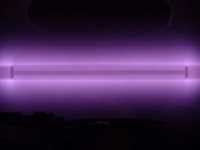
The duo-plasmaline is a direct microwave based plasma source, which is capable of producing a very homogeneous plasma over a length of up to several meters, similar to ECR (ElectronCyclotronResonance) plasma sources, but without the need for a magnetic field. It consists of a special tube, with Magnetrons supplying the required microwave energy connected at both ends. Once microwave energy is supplied a plasma discharge ignites at the outside at the tubes next to the microwave in-feed, and with increasing microwave power the plasma discharge starts extending along the tube, until the whole tube is covered with a homogeneous plasma. The duo-plasmaline is usually operated at a microwave frequency of 2450 MHz, and is capable to ignite and sustain a plasma at a pressure typically ranging from 10 Pa to 1000 Pa (75 mTorr to 7.5 Torr). The key characteristics of the duo-plasmaline are:
- Operates in the low pressure regime
- Compact design and easily scalable
- Large axial plasma area
- High efficiency and plasma density
- Low damage due to low ion temperature
- Easy integration into customised systems
Plasma array - scalable plasma sources
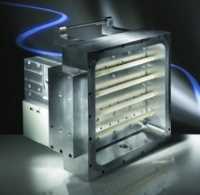
The plasma array consists out of 2 or more duo-plasmalines, arranged in parallel to each other. While a duo-plasmaline provides an axially homogeneous plasma and is therefore especially suitable for the installation in the centre of a treatment chamber, the plasma array is capable of treating a large 2-dimensional area with a very homogeneous plasma. Plasma arrays can be easily configured to adapt to the treatment area required by your process by selecting the number and length of the duo-plasmalines integrated into the array. Advantages of the plasma array are:
- Low pressure microwave plasma source
- Scalable and compact design
- Large area applications
- High plasma density
- High efficiency
- Low damage
- Easy adaption to customised systems
Planartron - planar plasma sources
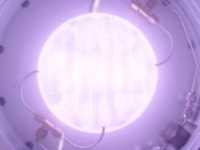
Similar to a plasma array, a Planartron can supply a very homogeneous plasma over a 2-dimensional area. However, unlike the plasma array, the Planartron uses a quartz plate to separate the plasma generating volume from the process chamber. Therefore, while the plasma generating volume is operated at its nominal pressure, the process chamber can be operated at a different, usually much lower pressure. It is therefore suitable for processes which cannot be operated at the nominal pressure of a plasma array, typical examples are:
- Direct application of plasma onto substrates
- Isotropic etching of silicon, silicon nitride, silicon oxide at high etching rates
- Photo resist stripping on different materials like silicon, silicon oxide, metals, high-k and low-k materials
- Drilling and desmearing of flexible PCBs
- Surface treatment of silicon surfaces, e.g. nitration and oxidation
- Backend operations like wafer thinning and stress relief
APS - atmospheric plasma sources
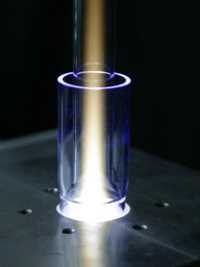 Our APS (AtmosphericPlasmaSources) consist of our new generation of compact Magnetron heads, power supplies, tuning elements and specially designed microwave cavities. These cavities concentrate the microwave energy inside a small region in the centre of the cavities, the resulting field strength is sufficient to easily ignite and heat a plasma even at atmospheric pressure. At a microwave frequency of 2450 MHz several Kilowatt of power can be fed into the plasma, making it possible to reach gas temperatures of around 3500 K. A newly designed microwave cavity, operating at 915 MHz, even permits to feed up to 30 kW of microwave power into the plasma, thus permitting to reach this temperature at a much higher mass flow.
Our APS (AtmosphericPlasmaSources) consist of our new generation of compact Magnetron heads, power supplies, tuning elements and specially designed microwave cavities. These cavities concentrate the microwave energy inside a small region in the centre of the cavities, the resulting field strength is sufficient to easily ignite and heat a plasma even at atmospheric pressure. At a microwave frequency of 2450 MHz several Kilowatt of power can be fed into the plasma, making it possible to reach gas temperatures of around 3500 K. A newly designed microwave cavity, operating at 915 MHz, even permits to feed up to 30 kW of microwave power into the plasma, thus permitting to reach this temperature at a much higher mass flow.
MA series - reactive ion sources
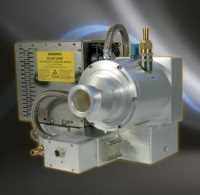
Our reactive ion sources (radical sources) of the MA-series are designed as RPS (RemotePlasmaSources) for the integration into vacuum chambers. A RPS only maintains a plasma inside the unit itself and therefore only provides radicals to the actual process chamber, thus avoiding the negative effects of direct ion bombardment like thermal stress etc. The typical process pressure for reactive ion sources of the MA-series is in the range of 40 Pa to 650 Pa (0.4 Torr to 5.0 Torr). The key characteristics of the MA-seires are:
- Unique compact design
- Water cooled plasma zone
- Very high efficiency and plasma density
- Can be operated in pulsed mode
- Ultra clean remote plasma source
- Easy to operate and low maintenance
- Especially suitable for high-tech semiconductor processing
If you are interested in our plasma & ion sources or simply want to know more about the advantages of this technology please contact us.